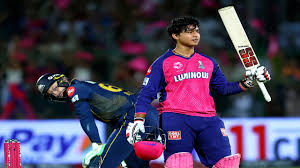The Rise of MMA Fighters: A Look into Their World

Introduction
Mixed Martial Arts (MMA) has surged in popularity over the past two decades, becoming a prominent global sport. The rise of MMA fighters not only reflects a shift in combat sports but also highlights the cultural impact these athletes have on fans and aspiring fighters alike. Understanding their journeys, training regimens, and marketability is crucial as mixed martial arts continues to grow.
Current Landscape of MMA Fighters
According to recent reports from the Ultimate Fighting Championship (UFC), which is the leading organisation in the sport, the number of licensed fighters has grown significantly. In 2023, there are over 700 active fighters within the UFC alone, representing diverse backgrounds, styles, and nationalities. This diversity contributes to the sport’s appeal, as fighters such as Israel Adesanya and Amanda Nunes have not only excelled in their respective categories but also gained immense popularity through their unique fighting techniques and personal stories.
Striking Trends and Training Regimens
Training for MMA is an arduous process that combines various martial arts forms, including Brazilian Jiu-Jitsu, wrestling, Muay Thai, and boxing. Fighters often train multiple times a day, focusing not only on physical fitness but also on mental conditioning. The shift towards technology in training is noteworthy, with many fighters employing simulation tools and analytics to enhance their performance. In 2023, the use of artificial intelligence and wearable technology is revolutionising how fighters prepare for their bouts.
Marketability and Sponsorships
MMA fighters are becoming increasingly marketable, with many leveraging their platforms for endorsements and sponsorships. As combat sports gain a larger share of the entertainment market, brands are keen to partner with fighters who can reach and influence millions. Recent figures show that some top fighters can earn substantial incomes through sponsorships, in addition to their fight purses. This trend indicates a lucrative pathway for future fighters, but it also places emphasis on personal branding and social media presence.
Conclusion
The landscape of MMA fighters is ever-evolving, driven by increased participation, technological advancements, and lucrative opportunities. As the sport continues to grow, the role of MMA fighters expands beyond the octagon, influencing culture and inspiring new generations of athletes. Future developments such as the rise of women’s divisions and international competitions are likely to further shape the MMA world. For fans and emerging fighters, staying informed on these trends is essential to understanding the dynamics of MMA in the contemporary sports environment.









